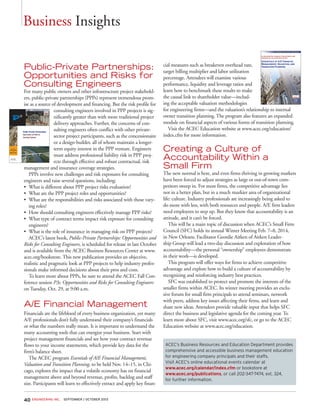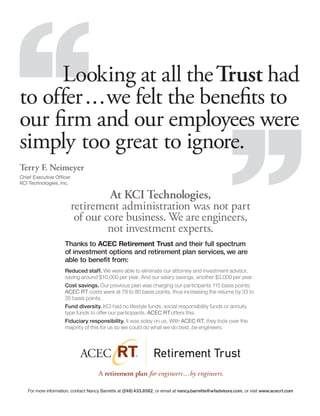The article discusses the challenges facing long-term infrastructure funding in the United States. It features an interview with Rep. Bill Shuster, chairman of the House Transportation and Infrastructure Committee, who discusses his plan to address the nation's infrastructure funding dilemma. The plan aims to establish a long-term, sustainable funding mechanism through public-private partnerships and other financing strategies. The article also provides background on the magazine, including that it is published by the American Council of Engineering Companies to promote advocacy and business interests of its member firms.
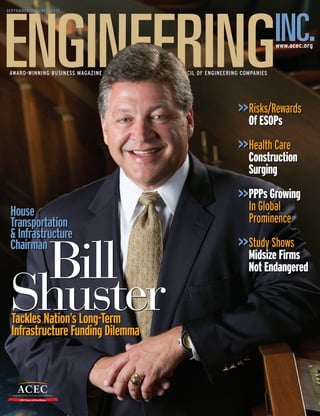
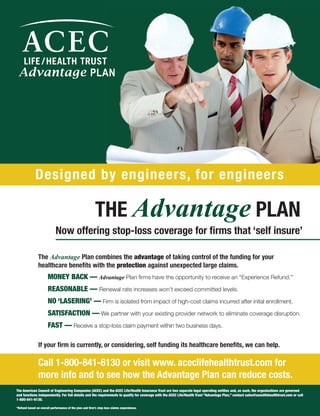
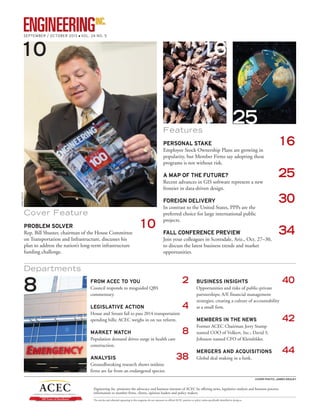








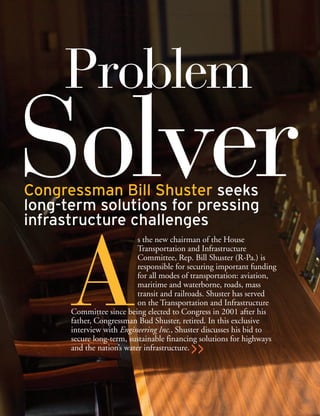



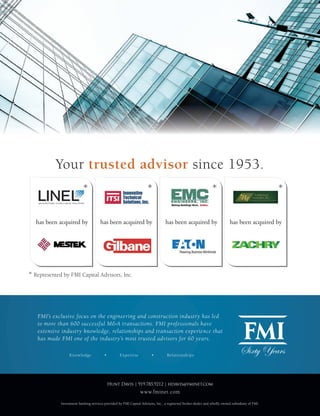

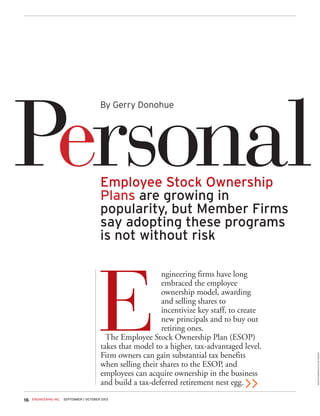


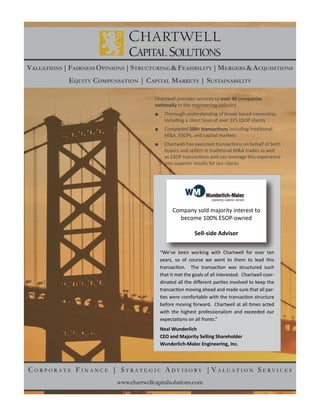

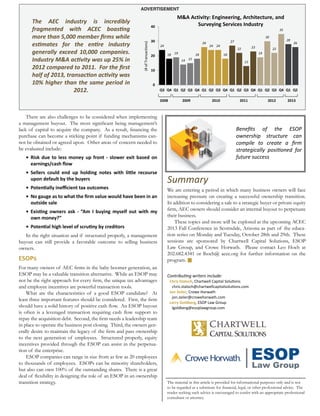


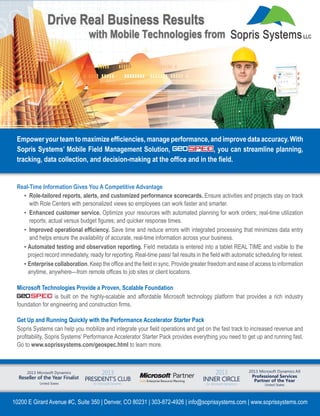


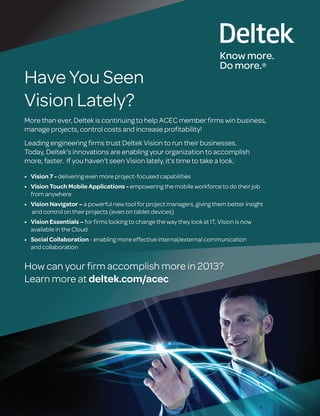




![ENGINEERING INC. SEPTEMBER / OCTOBER 201332
made it difficult to do PPPs.
The municipal bond mar-
ket is there for public enti-
ties to finance infrastructure
projects, and it has created a
strong incentive to do tradi-
tional kinds of procurement
without trying to attract pri-
vate investors.”
Another reason, Cooks
says, is political resistance,
including in the contractor
community. “They are accus-
tomed to doing traditional
procurement, working with
state and local governments,”
he says. “They’re not inter-
ested in taking investor risk
in projects and prefer to con-
tinue the way they have been
billing the government for
construction and leaving it
to the government to manage
projects once they are constructed.”
In addition, the U.S. market is compli-
cated and segmented politically between
federal and state governments, Cook says.
“Developers, looking at markets in France
or Spain or someplace else, have a single
country to deal with,” he says. “They
don’t worry about what the rules are at the
municipal or county level, because there are
national procurement systems in place, and
they can focus their attention on national
projects.”
It’s much easier for devel-
opers to deploy procurement
teams if they don’t have to
work their way through
a maze of federal and state
regulations, as they would
have to do in the U.S. mar-
ket, Cook says. “The institu-
tional framework they have
to deal with is simpler.”
Also, important is the
assumption of risk by the
developer teams, both from
the standpoint of construc-
tion and generating costs as
well as potential user interest
and actual use when com-
plete if payback is user-fee
dependent.
Experts say that while
engineering firms can take
advantage of the growing
PPP opportunities inter-
“While PPPs
don’t work in
every situation,
states have
found them to
be effective tools
for delivering
large, complex
projects.”
GEORGE PIERSON
PARSONS BRINCKERHOFF
nationally, they should not give up on
opportunities in the United States.
“I’ve heard that there are more projects
coming on stream,” Cook says. “And as
more come on, there is hope that the mar-
ket will begin to take off.”
Indeed, several ongoing stateside PPPs
involve ACEC Member Firms. New York-
based Parsons Brinckerhoff, the profes-
sional services division of international
engineering conglomerate Balfour Beatty,
is a team member on two PPPs that have
currently closed in the United States, says
George Pierson, president and CEO of
Parsons Brinckerhoff.
The company is the lead designer for
Elizabeth River Crossings (ERC), the PPP
consortium responsible for the $2.1 bil-
lion Midtown Tunnel PPP in Norfolk,
Va. Parsons Brinckerhoff is also part of
the design team for the new commuter
rail connection between Denver Union
Station and Denver International Airport,
a $2.9 billion PPP project. The company
has also been involved in PPPs in Texas,
Indiana, Florida, New York, California
and Ontario.
“On PPP projects, we team with a vari-
ety of major contractors and developers”
as well as other Balfour Beatty group com-
panies, Pierson says. “Parsons Brinckerhoff
also provides technical services to states
and authorities who are developing PPPs,
performing feasibility assessments and
‘value for money’ evaluations.”
PPPs are increasingly
becoming the preferred
method of procuring large
projects in many states, Pier-
son says.
“While PPPs don’t work
in every situation, states
have found them to be
effective tools for delivering
large, complex projects,” he
says.
Particularly appealing to
owners: the greater degree of
price and schedule certainty
associated with PPPs and
the fact that they don’t have
to have all the funds before
starting. “As well as whole-
life considerations and inno-
vations that can reduce the
overall cost of the project
over the concession period,”
Pierson says, “PPPs will
“Virtually every
country we
work with is
interested in
PPPs, if not
already doing
it.”
JACQUES COOK
INSTITUTE FOR PUBLIC-
PRIVATE PARTNERSHIPS
PPPs are particularly rel-
evant in developing countries
with low tax revenues and sig-
nificant natural resources or
tourist attractions that require
accelerated infrastructure
growth.
Public involvement often
involves property, legal, tax
and other accommodations
to attract private partners
into investments with the
potential for long-term pay-
back. The “build now, pay
later” approach encourages
private-sector development
in exchange for other conces-
sions, revenue payments or
future user fees. Sometimes
the projects also benefit the
private sector directly such as
with raw materials delivery
via rail, roads and ports.
PPP activity in the international market
fluctuates each year, says Geoff Haley, global
executive chairman of the London-based
International Project Finance Association,
which provides global PPP consulting.
“At present we are seeing a large expan-
sion of activity in Canada and South Amer-
ica,” Haley says.
PPPs are being launched all over the
world, including Australia, Europe and
the Middle East, Asia, Africa and Latin
America.
“Virtually every country we work with is
interested in PPPs, if not already doing it,”
says Jacques Cook, senior PPP advisor at
the Institute for Public-Private Partnerships
(IP3), which offers training to international
clients on PPP implementation. “The key
attraction [in the international market] is
to get investors to take some of the risk and
reduce the amount of government expo-
sure to project risk, and also to reduce the
amount of funding the government has to
put in,” he says. “With PPPs, governments
may still have to put some money in, but
not as much as they would otherwise.”
What’s the Holdup?
One reason for the lukewarm attitude
toward PPPs domestically is that much of
the U.S. infrastructure is funded through
municipal bonds.
“Those are very attractive to investors,”
Cook says. “They are the least-cost option
for financing opportunities, and that has](https://image.slidesharecdn.com/d8d1a69b-c365-465a-a584-a49b0caebf33-161108170054/85/Engineering-Inc_Full-Issue_SeptemberOctober-2013-34-320.jpg)







